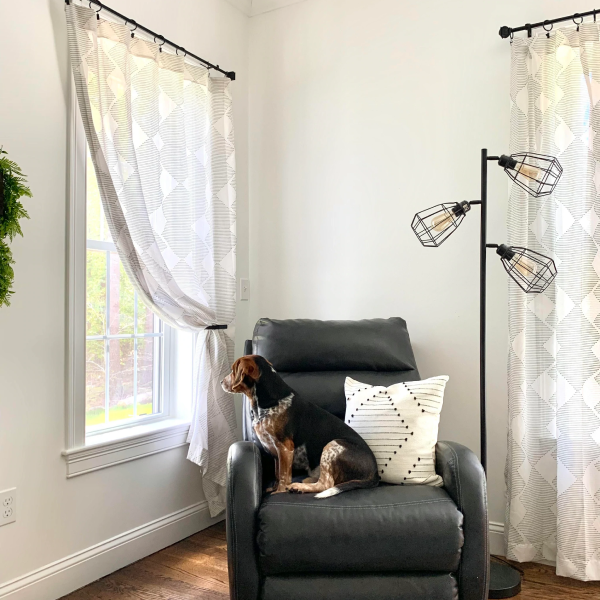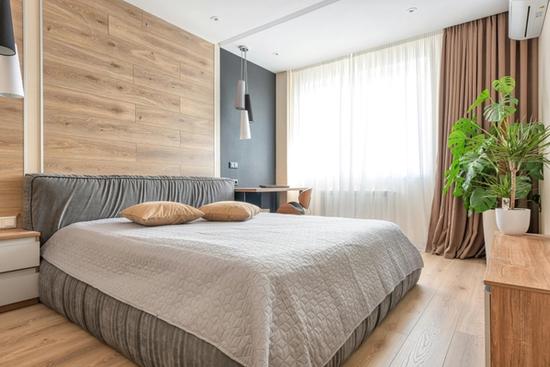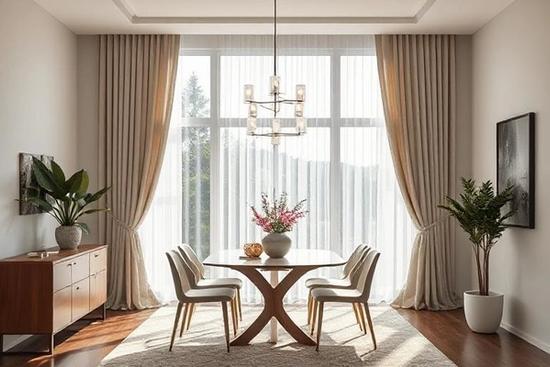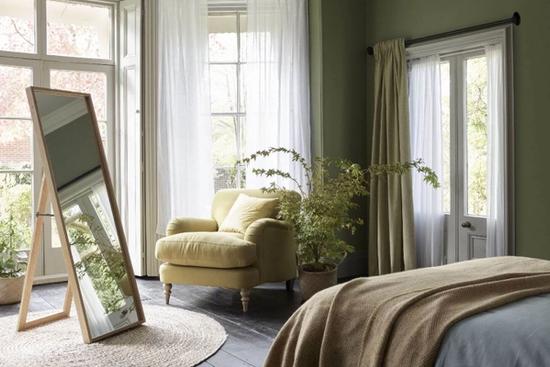Curtain Style Guide: 15 Types of Curtains For Your Home

If you’re wondering what kind of curtains you should get to elevate your home’s decor, you’ve come to the right place.
Selecting the right curtain styles for your room or home can be challenging, as there are many factors to consider. Which type of curtains are best? How long should they be? What window treatments go best with different rooms?
Today we’ll review 15 different types of curtains from decorative to functional and everything in between so you can hang your curtains with confidence:
- Single panel curtains
- Panel pair curtains
- Pinch pleat curtains
- Box pleat curtains
- Goblet pleat curtains
- Pencil pleat curtains
- Grommet curtains
- Rod pocket curtains
- Tab Top curtains
- Tie top curtains
- Blackout curtains
- Energy-efficient curtains
- Window sill curtains
- Apron curtains
- Cafe curtains
The structure of curtain pleats affects how the curtains will hang on a rod or how they’ll drape across your windows. Different curtain styles also serve unique functions: Some curtains block out light while others are just for decoration. So you’ll want to assess your household and décor needs beforehand to ensure you’re making the right choice.
1. Single Panel Curtains
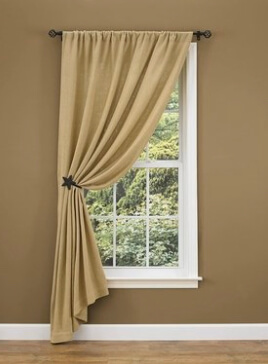
Have you ever wondered why some curtain panels are sold individually, other than to make you spend more money? Single panels are designed to cover an entire window and be pulled to one side when opened.
Where to use them: Single panels create a chic, modern look in almost any room. Single panel curtains may also be necessary for certain types of windows or room configurations.
2. Panel Pair Curtains
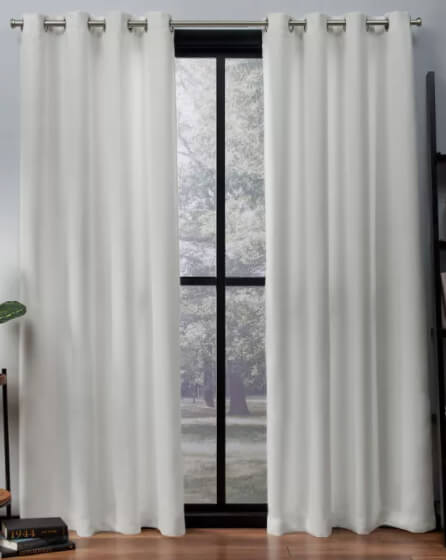
Panel pair curtains are sold in twos, enabling you to place a curtain on both sides of your window. These curtains are closed by pulling each panel together in the middle and can be held open with curtain tiebacks.
Where to use them: Panel pair curtains can be used just about anywhere you have room to hang draperies on both sides of a window.
3. Pinch Pleat Curtains

If you’re going for a traditional style, pleated curtains are your best bet. These curtains are typically made with thicker, heavier fabrics.
Pinch pleat (or tailored pleat) curtains are the most popular kind of pleated curtains. The pleats are stitched and pinched at the top, allowing the folds of the fabric to flow below and create an elegant, formal look.
Pinch pleat curtains range from two-finger pleats to five-finger pleats. More pleats give the curtains a fuller appearance. Three-finger pleats (pictured above) are the most common type of pinched pleated curtains.
Where to use them: Use pinch pleat curtains in master bedrooms, sitting rooms or entertaining rooms.
Read more: What Are the Best Curtain Fabrics for Your Home?
4. Box Pleat Curtains

On box pleat curtains, the folds run deep and uninterrupted across the entire length of fabric, providing full coverage with a tailored appearance.
Where to use them: Box pleat curtains are suitable for dining rooms, lounges or bedrooms.
5. Goblet Pleat Curtains
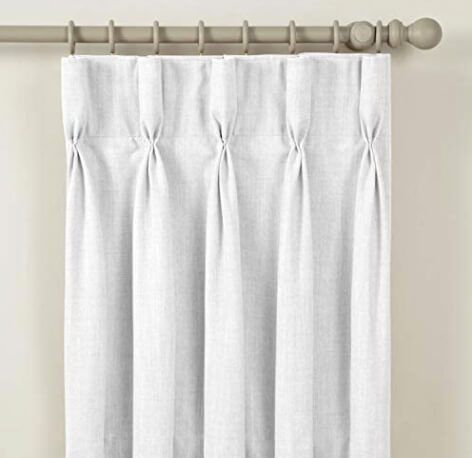
Goblet pleat curtains get their name from their resemblance to a goblet or wine glass. However, due to the delicate structure of the pleats, this curtain style should remain stationary and can only be used to frame and decorate the window. Therefore, they’re not a good option for curtains that get a lot of use.
Where to use them: Goblet pleat curtains are ideal for large, formal rooms with high ceilings.
6. Pencil Pleat Curtains

Pencil pleat curtains have thinner, single pleats that make working with various curtain hooks or rods easier.
Where to use them: Pencil pleat curtains are more casual than goblet or box pleat curtains. They’re perfect for bedrooms or living rooms that don’t require as much formality.
7. Grommet Curtains
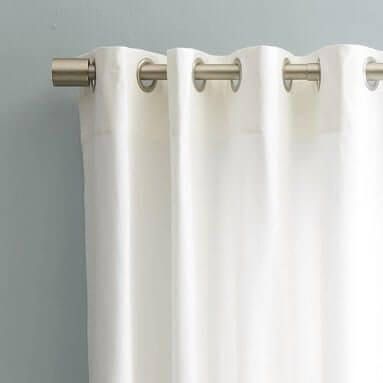
Grommet or eyelet curtains are a contemporary, modern style. Open rings (or grommets) support the panels and enable you to open or close the curtains with ease.
Where to use them: Grommet curtains are an excellent choice for bedrooms or any room where curtains are opened and closed regularly.
8. Rod Pocket Curtains
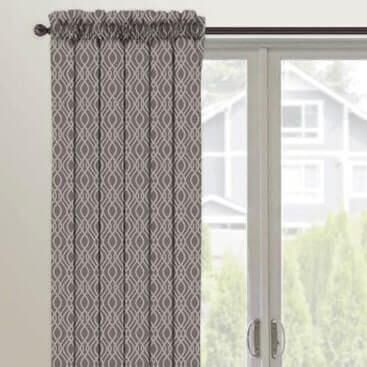
Rod pocket (also called pole pocket) curtains are typically made of lightweight or sheer fabrics. As a result, they are a lot more casual in style. These curtains are also easy to assemble: Slip the curtain rod through the “pocket” in the fabric, and you’re good to go!
Where to use them: Rod pocket panels are best with thinner, tighter-fit curtain rods, so they’re ideal for rooms where curtains aren’t opened and closed frequently.
9. Tab Top Curtains
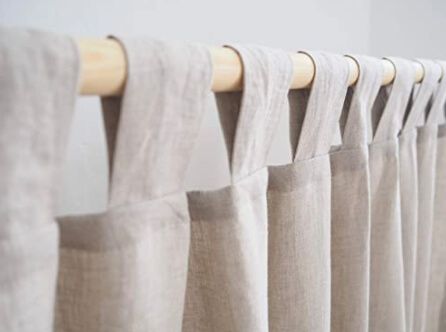
Like rod pocket curtains, tab top curtains are more casual in style. Tab top curtains have prominent loops that hang from the top seam of the panels and are easy to thread through a curtain rod.
Where to use them: Tab-top curtains are an attractive accent in farmhouse or cottage home décor.
10. Tie Top Curtains
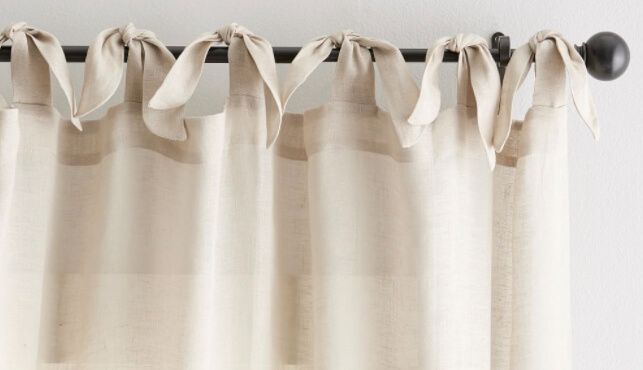
Like tab top curtains, tie top curtains hang below the curtain rod, creating a space that exposes both the rod and the wall behind it. Due to their delicate construction, tie top curtains are usually used with sheers and lightweight fabrics.
Where to use them: Tie top curtains are best in kids’ rooms, informal rooms and can also be used as cafe curtains.
Pro-tip: It’s important to note that your curtain hardware will be visible through these curtains. Be sure to use curtain rods and finials that are attractive and in good shape when choosing grommet, tab top or tie top curtains.
11. Blackout Curtains

If you struggle to get a restful night’s sleep, installing blackout curtains may help. Blackout curtains are made with heavyweight materials that block light and offer the most amount of privacy.
Where to use them: Blackout curtains are ideal for bedrooms, guest rooms and home theaters.
12. Energy Efficient Curtains

Energy efficient curtains (also called insulated or thermal curtains) are thick, heavy curtains that provide additional insulation. This insulation prevents air, heat and cold from entering or escaping your windows.
Where to use them: Energy efficient curtains help regulate the temperature inside your home. If you live in a very cold climate — or a very warm one — these curtains can aid in keeping you cool in the summer and warm in the winter.
13. Window Sill Curtains
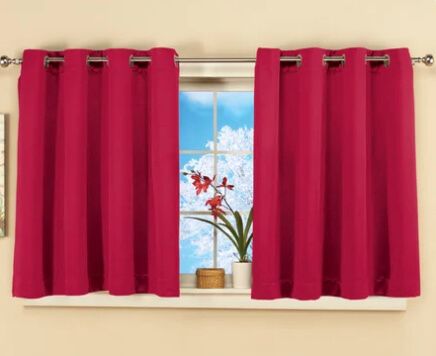
Window sill curtains are short curtains that hover slightly above the edge of the window sill. Window sill curtains are ideal for smaller windows or above furniture that would block longer drapes.
Where to use them: Window sill curtains are a popular choice for small windows that are often opened, like kitchens and bathrooms.
14. Apron Curtains

Apron curtains (also known as half-length curtains) are perfect if you need shorter curtains for your living areas or bedrooms or living rooms. They may also be a better choice for homes with pets or small children.
Where to use them: Apron curtains are ideal in kitchens, bedrooms or rooms with space air conditioners or radiators under the window.
Read More: Curtain Length Rules: How to Choose Curtain Lengths
15. Cafe Curtains
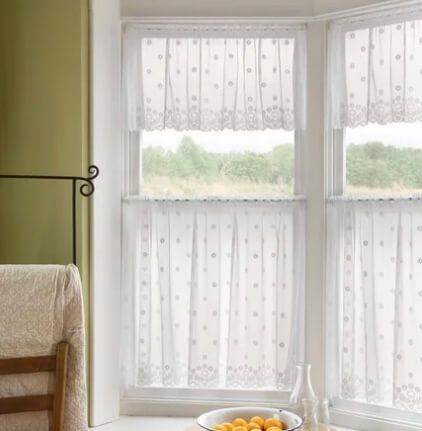
Cafe curtains (also called kitchen curtains) are short curtains often accompanied by a matching valance. Cafe curtains add personality to your space and are ideal for letting light in while providing a bit of privacy.
Where to use them: Cafe curtains are traditionally used in kitchens but can also be used in breakfast nooks, sunrooms or bedrooms if light filtering and privacy are not concerns.
Hang Your Curtains With Confidence
There’s plenty to think about when selecting the right curtain style, so don’t waste any more time once you’re finally ready to hang your curtains.
Make your life easier with Kwik-Hang Curtain Rod Brackets. It takes seconds to align the brackets to your window trim, tap in with a hammer and hang your curtains – without using any screws or drills. Not to mention you’ll achieve perfect curtains – every time!
The brackets also support up to 20 pounds of fabric, so no matter what curtain style or curtain fabric you choose, Kwik-Hang has you covered.
